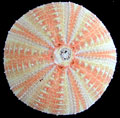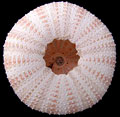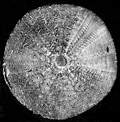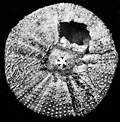The Echinoid Directory
Allocentrotus Mortensen, 1942, p. 232
| Diagnostic Features |
|
|---|---|
| Distribution | Recent, West coast of North America. |
| Name gender | masculine |
| Type | Strongylocentrotus fragilis Jackson, 1912, by original designation. |
| Species Included | Only the type species |
| Classification and/or Status |
|
| Remarks |
|





